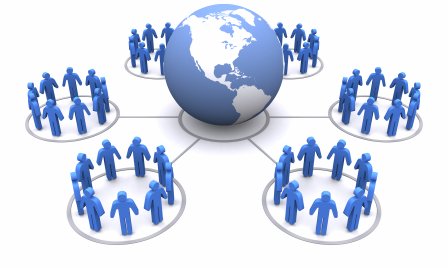November 21, 2010
Of People and the Power of Persuasive Networks
 Words can be powerful. They influence purchases – “I’ll buy this good over that good”. “This good is better for me”. “I want that”. In government, they affect public opinion – “I am/am not for government sponsored healthcare reform”, “ I am for less taxes” “We need more roads”.
Words can be powerful. They influence purchases – “I’ll buy this good over that good”. “This good is better for me”. “I want that”. In government, they affect public opinion – “I am/am not for government sponsored healthcare reform”, “ I am for less taxes” “We need more roads”.
This is why the industry of preference formation (advertising, marketing, and public relations) is a multi-billion dollar industry. Often goaled with sending just the right message, or controlling the message, it is founded upon the belief that if organizations can just choose the right words—the magic words—consumer and citizen behavior result.
But what about people – those like us? Aren’t we the most important actors in preference formation?
Persuasive people
When our trusted friends like (or dislike) a product, or service, or have a particular point of view, aren’t they many times more powerful in persuading us to act? Our credentialed peers have after all performed the heavy lifting of preference formation through their experience, or reasoned analytics.
And if it is true that people are more influential than any words or messages that might be hurled in our direction from advertising—how does the paradigm of human networks connected by the Internet practically change how organizations best leverage those networks for preference formation? (see Preference Formation podcast on original post)
Persuasive networks
The answer is that networks are changing the face of preference formation by the day. And the organizational role in those networks is changing as well.
Early Internet companies represent evolutionary steps in the cycle of network transformation. Google, facebook and now twitter use our search for knowledge, recognition, and connection to achieve audience aggregation. They understand that a listening audience is likely to be more receptive to messages than an unfocused crowd. However, like traditional media before them, their business models remain premised on enabling business to pitch messages in the form of advertising. No advertising—no network.
A second, more profound way to achieve preference formation is to put people at the center of networks— to enable consumers and citizens to have meaningful targeted exchange. When credentialed peers share experiences, preference formation and consumer and citizen action that follows can be swift. People act decisively because they have more confidence in their newly developed preferences.
But organizations have a role in success as well. Success is not simply a function of consumer or citizen exchange.
Rather than messaging through advertising and public relations, effective organizations shift their focus to providing trusted content. Trusted content catalyzes value to consumers and citizens. Members exchange content, talk about it, and “add their 2 cents” (often user generated content), all of which means that there is more exchange and thus more value created by the network.
For instance, Amazon provides trusted content that facilitates e-commerce. It also enables consumers to connect (and influence) each other through both product satisfaction ratings (coordinate effects) and consumer-to-consumer sharing of experience (cooperative effects). The combination drives extraordinary financial results—driven by peer based preference formation.
The same opportunity is open to government. Like Amazon, if government adopts the role of providing trusted content that facilitates citizen exchange (not messaging), citizens can in turn develop new solution possibilities to big problems.
And so….
The point is that using networks to drive new business outcomes or to solve big policy problems in government requires both to use networks that enable a new form and scale of preference formation—one built on peer exchange and trusted content rather than audience aggregation and advertising messages. That is the essence of persuasive networks – recognizing the value of our peers to create a sense of possibility.
Kim Kobza
Pingback: Tweets that mention Of People and the Power of Persuasive Networks -- Topsy.com